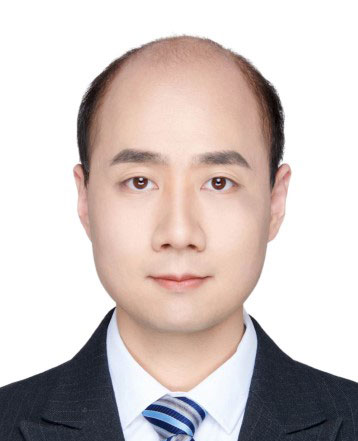
张柘,中国科学院空天信息创新研究院、苏州空天信息研究院,研究员、博士生导师。研究方向为新体制SAR成像与信号处理技术,重点开展稀疏信号处理、稀疏微波成像、信号处理与深度学习结合等领域研究。为国家高层次青年人才项目入选者、中科院高层次青年引进人才,江苏省“双创人才”,苏州市“姑苏领军人才”,入选2022年中国科学院“青年交叉团队”成员。曾参与国家973项目、美国NSF项目、美国国防部SBIR项目等;现主持国家“海外优青”、中科院重点部署课题、中科院空天院重点部署项目、苏州市科技计划等项目,参与国家自然科学基金重大、科技委基础加强、创新特区等项目多项,参与多颗星载SAR的数据处理工作。发表论文50余篇,申请发明专利5项,担任国内外6个SCI期刊审稿人、MiViSAR2022国际会议学术程序主席、10余个国际会议TPC成员。获2021年首届科技部全国颠覆性技术创新大赛优胜奖、总决赛优秀奖。
工作经历:
2023.01-现在 苏州空天信息研究院22室 主任助理/学术带头人
2022.04-现在 中国科学院空天信息创新研究院/苏州空天信息研究院 研究员
2021.01-2022.04 中国科学院空天信息创新研究院/苏州空天信息研究院 副研究员/创新研究员
2016.12-2020.06 乔治梅森大学 博士后研究员
2015.12-2016.01 乔治华盛顿大学 博士后研究员
稀疏信号处理、稀疏微波成像、新体制SAR成像与信号处理技术、信号处理与深度学习结合
(1)稀疏信号处理及其在微波成像中的应用研究,负责人,国家任务,2023-01--2025-12
(2)稀疏信号处理与深度学习及其在微波成像中的应用,负责人,中国科学院计划,2021-01--2024-01
(3)*******SAR成像处理与信息提取,负责人,中国科学院计划,2022-01—2024-12
(4)结构信号的自适应高效感知及在微波成像中的应用研究,负责人,中国科学院空天信息创新研究院自主部署,2021-07--2023-07
(5)街角盲区建筑布局重建机理与方法,参与,国家任务,2023-01—2025-12
(6)合成孔径雷达微波视觉三维成像理论与应用基础研究,参与,国家任,2020-01--2024-12
(7)微波三维成像的高效感知系统与技术的研发,主持,苏州市科技计划,2021-12--2024-12
(8)先进微波探测与信息处理,参与,中国科学院计划,2010-01--2014-12
(9)稀疏微波的成像理论、体制和方法研究,参与,国家任务,2010-01--2014-12
[1]Y. Zhao, Y. Chen, H. Tian, X. Quan, B. W.-K. Ling, and Z. Zhang*, “Wide angle SAR imaging method based on hybrid representation,” Electron. Lett., vol. 59, no. 15, p. e12897, Aug. 2023, doi: 10.1049/ell2.12897.
[2]R. Shi, Z. Zhang*, X. Qiu, and C. Ding, “A Novel Gradient Descent Least-Squares (GDLSs) Algorithm for Efficient Gridless Line Spectrum Estimation With Applications in Tomographic SAR Imaging,” IEEE Trans. Geosci. Remote Sens., vol. 61, pp. 1–13, 2023, doi: 10.1109/TGRS.2023.3273568.
[3]M. Wang, Z. Zhang*, X. Qiu, S. Gao, and Y. Wang, “ATASI-Net: An Efficient Sparse Reconstruction Network for Tomographic SAR Imaging With Adaptive Threshold,” IEEE Trans. Geosci. Remote Sens., vol. 61, pp. 1–18, 2023, doi: 10.1109/TGRS.2023.3268132.
[4]J. Li, Z. Xu, Z. Li, Z. Zhang*, B. Zhang, and Y. Wu, “An Unsupervised CNN-based Multichannel Interferometric Phase Denoising Method Applied to TomoSAR Imaging,” IEEE J. Sel. Top. Appl. Earth Obs. Remote Sens., vol. 16, pp. 3784–3796, Jul. 2023, doi: 10.1109/JSTARS.2023.3263964.
[5]康健*, 童风雨, 白雨松, 丁翔, 冀腾宇, and 张柘*, “基于对数域矩阵分解的时序SAR图像相干斑抑制及成分分析方法,” 雷达学报, 已录用.
[6]P. Jiang, Z. Zhang*, B. Zhang, and Z. Xu, “A novel TomoSAR imaging method with few observations based on nested array,” IET Radar, Sonar Navig., vol. 17, no. 6, pp. 925–938, Jun. 2023, doi: 10.1049/rsn2.12388.
[7]Z. Xu, B. Zhang, Z. Zhang*, M. Wang, and Y. Wu, “Nonconvex-Nonlocal Total Variation Regularization Based Joint Feature-Enhanced Sparse SAR Imaging,” IEEE Geosci. Remote Sens. Lett., vol. 19, pp. 1–1, 2022, doi: 10.1109/lgrs.2022.3222185.
[8]Y. Zhao, W. Huang, X. Quan, W.-K. Ling, and Z. Zhang*, “Data-driven sampling pattern design for sparse spotlight SAR imaging,” Electron. Lett., Oct. 2022, doi: 10.1049/ELL2.12650.
[9]Z. Xu, G. Zhou, B. Zhang, Z. Zhang*, and Y. Wu, “Sparse regularization method combining SVA for feature enhancement of SAR images,” Electron. Lett., Jun. 2022, doi: 10.1049/ell2.12509.
[10]赵曜, 许俊聪, 全相印, 崔莉, and 张柘*, “基于稀疏和低秩结构的层析SAR成像方法,” 雷达学报, vol. 11, no. 1, pp. 52–61, 2022, doi: 10.12000/JR21210.
[11]Z. Zhang et al., “Embedded micro radar for pedestrian detection in clutter,” in 2020 IEEE International Radar Conference, RADAR 2020, Apr. 2020, pp. 368–372. doi: 10.1109/RADAR42522.2020.9114544.
[12]Z. Zhang, Y. Wang, and Z. Tian, “Efficient two-dimensional line spectrum estimation based on decoupled atomic norm minimization,” Signal Processing, vol. 163, no. Xx, pp. 95–106, Oct. 2019, doi: 10.1016/j.sigpro.2019.04.024.
[13]Z. Wang, X. Lin, X. Xiang, Z. Zhang, Z. Tian, K. Pham, E. Blasch, and G. Chen, “A hidden chamber detector based on a MIMO SAR,” in Sensors and Systems for Space Applications XII, Jul. 2019, vol. 11017, no. 29, p. 6. doi: 10.1117/12.2520643.
[14]Z. Zhang, X. Chen, and Z. Tian, “A hybrid neural network framework and application to radar automatic target recognition,” 2018 IEEE Glob. Conf. Signal Inf. Process. Glob. 2018 - Proc., pp. 246–250, 2018, doi: 10.1109/GlobalSIP.2018.8646582.
[15]Z. Zhang and Z. Tian, “ANM-PhaseLift: Structured line spectrum estimation from quadratic measurements,” 2017 IEEE 7th Int. Work. Comput. Adv. Multi-Sensor Adapt. Process. CAMSAP 2017, vol. 2017-Decem, no. 2, pp. 1–4, 2018, doi: 10.1109/CAMSAP.2017.8313194.
[16]Z. Tian, Z. Zhang*, and Y. Wang, “Low-complexity optimization for two-dimensional direction-of-arrival estimation via decoupled atomic norm minimization,” in ICASSP, IEEE International Conference on Acoustics, Speech and Signal Processing - Proceedings, 2017, pp. 3071–3075. doi: 10.1109/ICASSP.2017.7952721.
[17]张柘, 张冰尘, 洪文, and 吴一戎, “结合MD自聚焦算法与回波模拟算子的快速稀疏微波成像误差补偿算法,” 雷达学报, vol. 5, no. 1, pp. 25–34, Feb. 2016, doi: 10.12000/JR15055.
[18]Z. Zhang, Z. Tian, B. Zhang, W. Hong, Y. Wu, and L. Li, “Multi-channel SAR covariance matrix estimation based on compressive covariance sensing,” in 2016 4th International Workshop on Compressed Sensing Theory and its Applications to Radar, Sonar and Remote Sensing, CoSeRa 2016, Sep. 2016, vol. 1, pp. 37–41. doi: 10.1109/CoSeRa.2016.7745695.
[19]Z. Zhang, B. Zhang, W. Hong, H. Bi, and Y. Wu, “SAR imaging of moving target in a sparse scene based on sparse constraints: Preliminary experiment results,” in International Geoscience and Remote Sensing Symposium (IGARSS), 2015, vol. 2015-Novem, pp. 2844–2847. doi: 10.1109/IGARSS.2015.7326407.
[20]B. C. Zhang, Z. Zhang*, C. L. Jiang, Y. Zhao, W. Hong, and Y. R. Wu, “System design and first airborne experiment of sparse microwave imaging radar: initial results,” Sci. China Inf. Sci., vol. 58, no. 6, pp. 1–10, 2015, doi: 10.1007/s11432-014-5266-6.
[21]吴一戎, 洪文, 张冰尘, 蒋成龙, 张柘, and 赵曜, “稀疏微波成像研究进展(科普类),” 雷达学报, vol. 3, no. 4, pp. 383–395, 2014, doi: 10.3724/SP.J.1300.2014.14105.
[22]W. Hong, B. Zhang, Z. Zhang*, C. Jiang, Y. Zhao, and Y. Wu, “Radar imaging with sparse constraint: Principle and initial experiment,” Proc. Eur. Conf. Synth. Aperture Radar, EUSAR, vol. Proceeding, pp. 1235–1238, 2014.
[23]Z. Zhang, Y. Zhao, C. Jiang, B. Zhang, W. Hong, and Y. Wu, “Autofocus of sparse microwave imaging radar based on phase recovery,” 2013 IEEE Int. Conf. Signal Process. Commun. Comput. ICSPCC 2013, 2013, doi: 10.1109/ICSPCC.2013.6663989.
[24]Z. Zhang, Y. Zhao, C. Jiang, B. Zhang, W. Hong, and Y. Wu, “Initial Analysis of SNR / Sampling Rate Constraints in Compressive Sensing based Imaging Radar,” 2nd Work. Compressive Sensng Appl. to Radar (CoSeRa 2013), vol. 55, no. 8, p. 100190, 2013.
[25]B. Zhang, Z. Zhang*, W. Hong, and Y. Wu, “Applications of Distributed Compressive Sensing in Multi-channel Synthetic Aperture Radar,” in Workshop on Compressive Sensng Applied to Radar (CoSeRa) 2012, 2012, no. May, pp. 1–4. Accessed: Mar. 21, 2013. [Online]. Available: http://workshops.fhr.fraunhofer.de/cosera/pdf/1046_t.pdf
[26]Z. Zhang, B. C. Zhang, W. Hong, and Y. R. Wu, “Waveform design for Lqregularization based radar imaging and an approach to radar imaging with non-moving platform,” in Proceedings of the European Conference on Synthetic Aperture Radar, EUSAR, 2012, vol. 2012-April, no. 2, pp. 685–688. Accessed: Mar. 21, 2013. [Online]. Available: http://www.vde-verlag.de/proceedings-en/453404253.html
[27]Z. Zhang, B. C. Zhang, C. L. Jiang, Y. Xiang, W. Hong, and Y. R. Wu, “Influence factors of sparse microwave imaging radar system performance: Approaches to waveform design and platform motion analysis,” Sci. China Inf. Sci., vol. 55, no. 10, pp. 2301–2317, 2012, doi: 10.1007/s11432-012-4603-x.
(1)科技部首届全国颠覆性技术创新大赛,总决赛优秀奖、优胜奖、优秀奖,2022年
(2)国家高层次青年人才,2021年
(3)中国科学院高层次青年人才,2021年
(4)江苏省“双创人才”,2022年
(5)苏州市“姑苏领军人才”,2021年
(6)中国科学院“青年交叉团队”成员,2022年
研究队伍